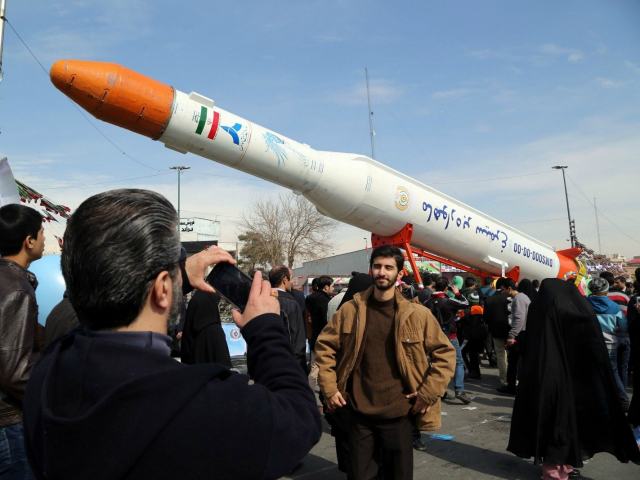Iranian state media reported on Thursday that Iran successfully launched a rocket carrying a 550-pound satellite into space. If these claims are accurate, the report would be a troubling step on Iran’s march to intercontinental ballistic missile capability.
The Times of Israel and Associated Press quote Iranian media describing the rocket as a “Simorgh” class platform, a name that means “Phoenix” in Persian. The claim of a successful launch was made on state-run television and echoed by an affiliated website and the Fars news agency.
The UK Daily Mail reports Iranian media described the launch as “the official inauguration of Iran’s Imam Khomeini space center, named after the founder of the Islamic republic, built for sending satellites into space.” The exact location of this space center was not divulged in the report.
A U.S. official confirmed Iran’s rocket launch to Fox News on Thursday morning but could not confirm if the rocket was actually able to boost its satellite payload into orbit.
Iran has been developing a satellite launch program for years and has previously launched several dummy satellites and capsules containing test animals. One of the test animals was a monkey, which Iran claims to have recovered safely.
A satellite launch was reported in 2015, using a different class of rocket than the one mentioned in Thursday’s claim. While Iran has been able to get some objects into space, analysts generally believe they have not yet been able to put a satellite into stable orbit. Plans to put human astronauts in orbit were recently abandoned, ostensibly due to the cost.
The Simorgh rocket is believed to be a two-stage liquid-fueled vehicle, much larger and more powerful than the modified Shahab-3 long-range missiles used in previous Iranian launches. Based on the mock-ups Iran has displayed, the Simorgh does not have the range or power to carry a nuclear warhead as far as the United States, but it could be an evolutionary step on the way to creating such a vehicle.
“Simorgh was meant to be launched in 2010, and its conspicuous absence could have any number of meanings: that its development has been harder than anticipated, that sanctions on ballistic missile and space technology have limited Iran’s ability to get materials it needs, or that there have been test launches already that have failed and not been reported,” the Union of Concerned Scientists reports.
As with its nuclear program, Iran claims its satellite program is for entirely peaceful purposes, despite being managed by the Iranian defense ministry.

COMMENTS
Please let us know if you're having issues with commenting.